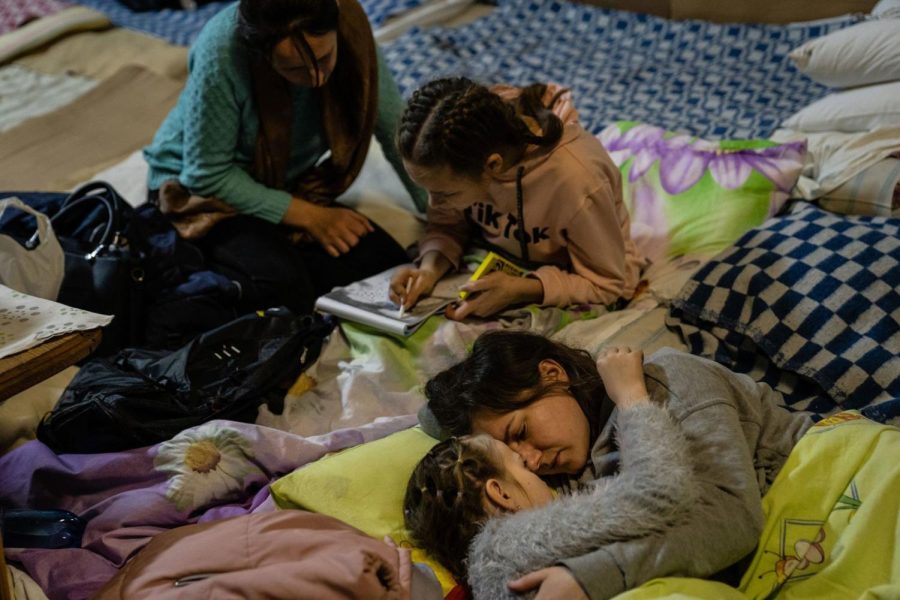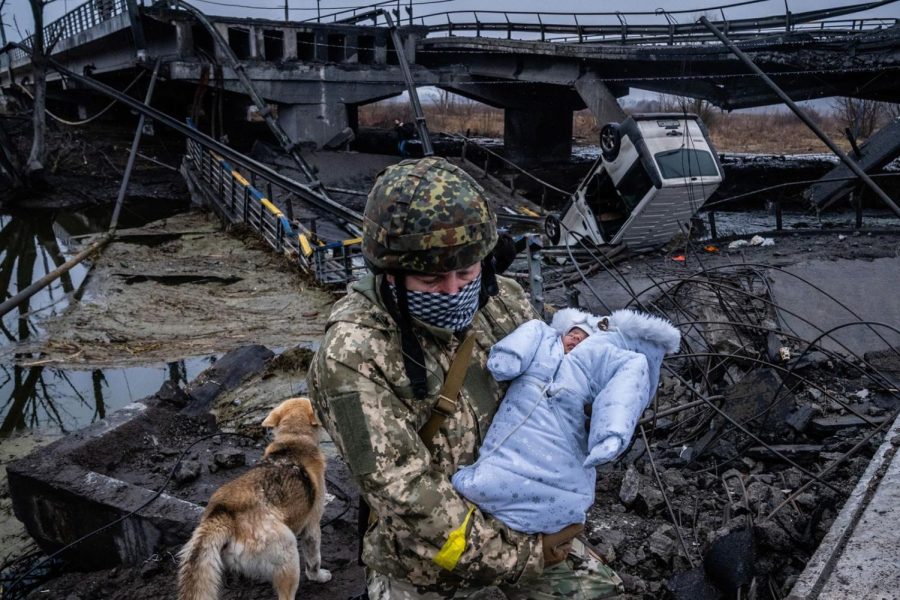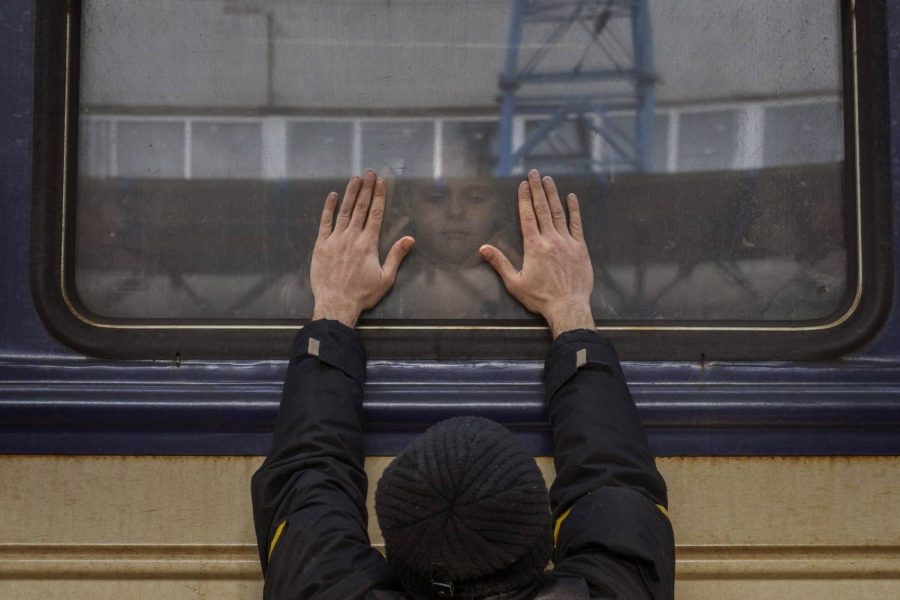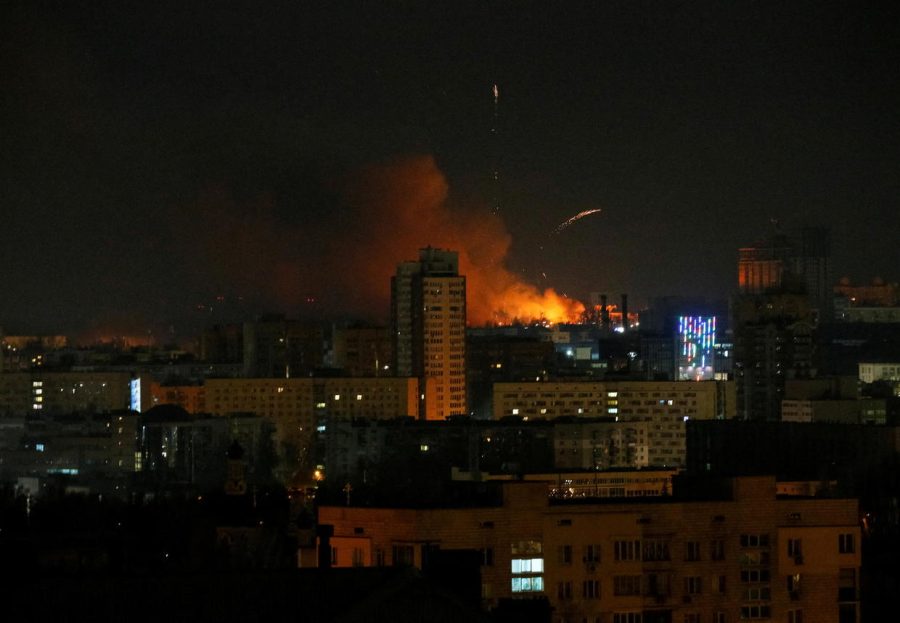What’s Happening With Russia/Ukraine
A recap of the last 2 weeks of the Russia-Ukraine conflict.
PHOTO | Garanich/Reuters
Smoke and flames rise during the shelling in Kyiv, as Russia continues its attack on Ukraine on Feb. 26.
Russian forces launched an attack on Ukraine on Feb. 24 in what Russian President Vladimir Putin has declared as a “special military operation,” according to CNN. The attack follows months of Russia amassing thousands of troops along the Russian and Belarusian borders with Ukraine, heightening international concerns.
Over the course of the past 2 weeks days, Russian troops have launched offensives on four of Ukraine’s major cities: Kharkiv, Mariupol, Kherson and Kyiv, exchanging gunfire with Ukrainian forces and engaging in heavy shelling of civilian sites, including residential blocks, hospitals and dormitories for people displaced by the fighting, according to NBC. Russian forces have surrounded the cities, cutting off supply chains that would allow food, water and medical supplies to enter and preventing officials from transporting out the wounded and dead as well denying the establishment of effective humanitarian corridors, which would allow civilians to evacuate, according to the Washington Post. On March 2, Kherson became the first major Ukrainian city to fall to invading Russian troops, according to the New York Times. The city’s mayor confirmed in a statement that Ukrainian forces were no longer present in the city and urged residents to obey the directives of Russian occupiers.

On March 4, Russian forces also gained control of the Zaporizhzhia Power Plant in southeastern Ukraine, according to CNN. Tanks and infantry surrounded the plant before dawn on Friday and opened fire on it shortly after. The building was hit by a Russian projectile, causing a localized fire. Though the blaze was quickly extinguished and no reactors were affected, the event generated much alarm at the possibility of a potential nuclear incident. Ukrainian President Volodymyr Zelensky called the assault a “terror attack,” while atomic safety experts weighed in that a war fought amid nuclear reactors represented an unprecedented and highly dangerous situation, according to AP News.
The casualty total for the conflict currently remains uncertain, with each side offering differing accounts. The Russian Defense Ministry claimed in a statement on Wednesday that 498 Russian personnel have been killed since the beginning of the conflict and 1,597 have been wounded, according to NPR. They also asserted that within the Ukrainian military 2,870 soldiers had been killed and an additional 3,700 injured.

Ukraine’s alternate account alleged that Russian casualties were actually much higher, with nearly 6,000 dead, according to CNN. While they have not yet released a total for their own military losses, Ukraine’s State Emergency Service said on Wednesday that over 2,000 civilians had been killed since fighting began, including 21 children, according to the New York Times. A United Nations report from the same day listed civilian casualties as 227 dead, 525 injured, however it noted that the numbers were likely undercounts.
Additionally, over 1 million refugees have fled Ukraine since the beginning of the conflict, according to the U.N. High Commissioner for Refugees. Around half are currently located in neighboring Poland, while other countries that share borders with Ukraine, including Hungary, Moldova and Slovakia have also taken in large numbers, according to NPR. The refugee total currently accounts for just under 2% of Ukraine’s population of 44 million.

Ukrainian and Russian officials have met for two rounds of peace talks along the Belarusian border since the beginning of the conflict, according to ABC. Ukraine’s presidential advisor Mykhailo Podolyak has stated that Ukraine’s priorities for the talks are an immediate cease-fire, an armistice and humanitarian corridors for the evacuation of citizens, while other Ukrainian officials have said that they want all Russian troops withdrawn from Ukraine. Russia’s foreign minister has insisted that any peace agreement with Ukraine must include a promise of the country’s demilitarization and adoption of a neutral status as well abandoning any ambitions of joining NATO.
During the second round of talks on March 3, both sides were able to come to an agreement regarding the necessity of humanitarian corridors. However, as of March 4, Ukrainian officials say that the Russian military is not cooperating to establish the corridors, according to the Washington Post. A third round of peace talks will take place some time in the coming week.



